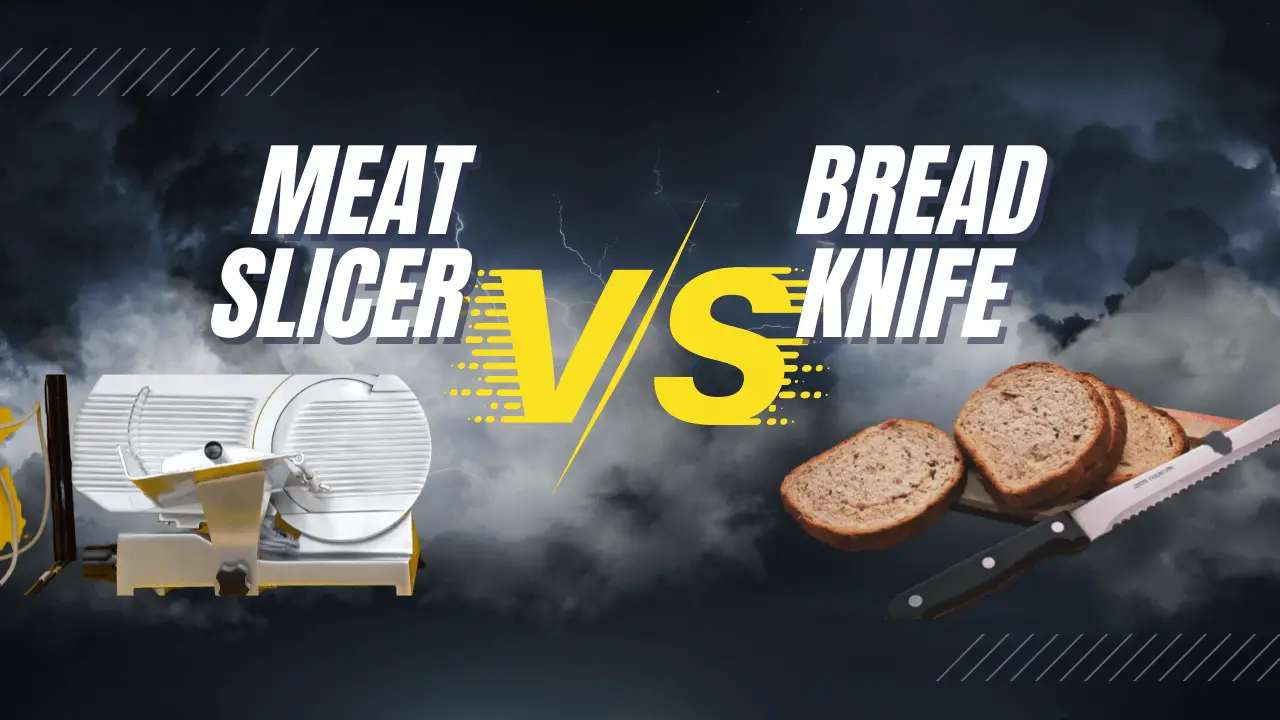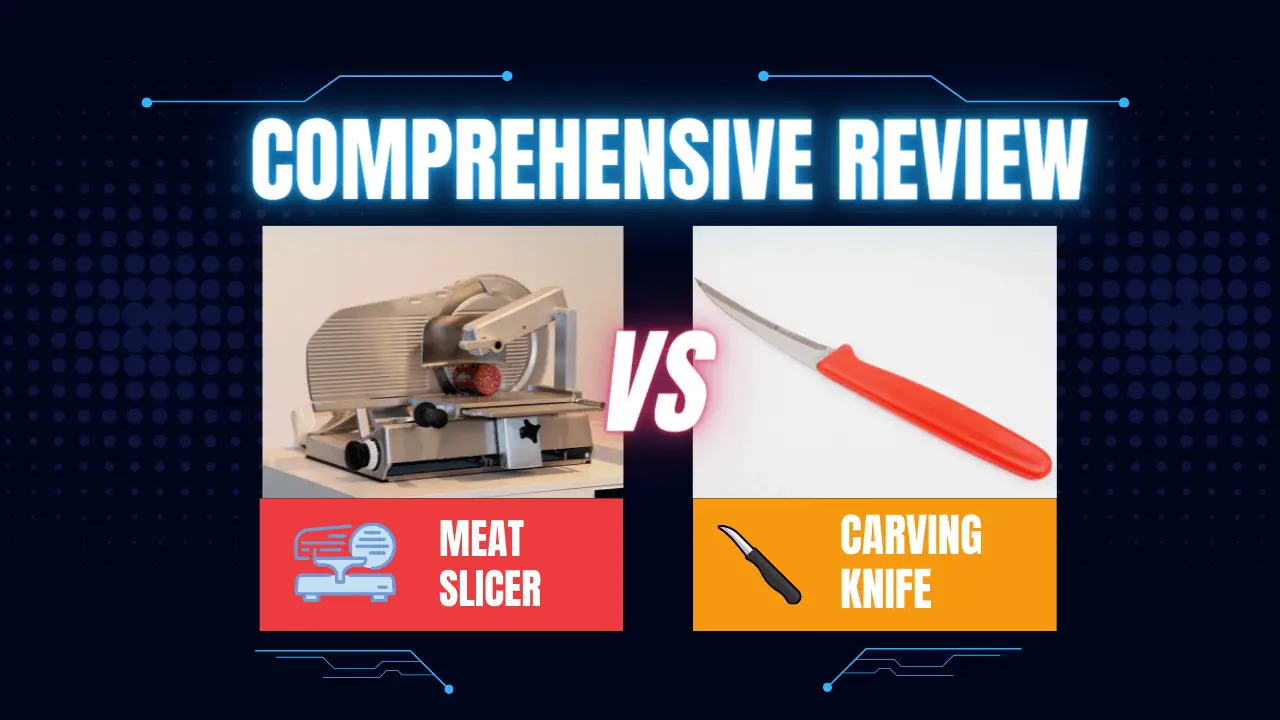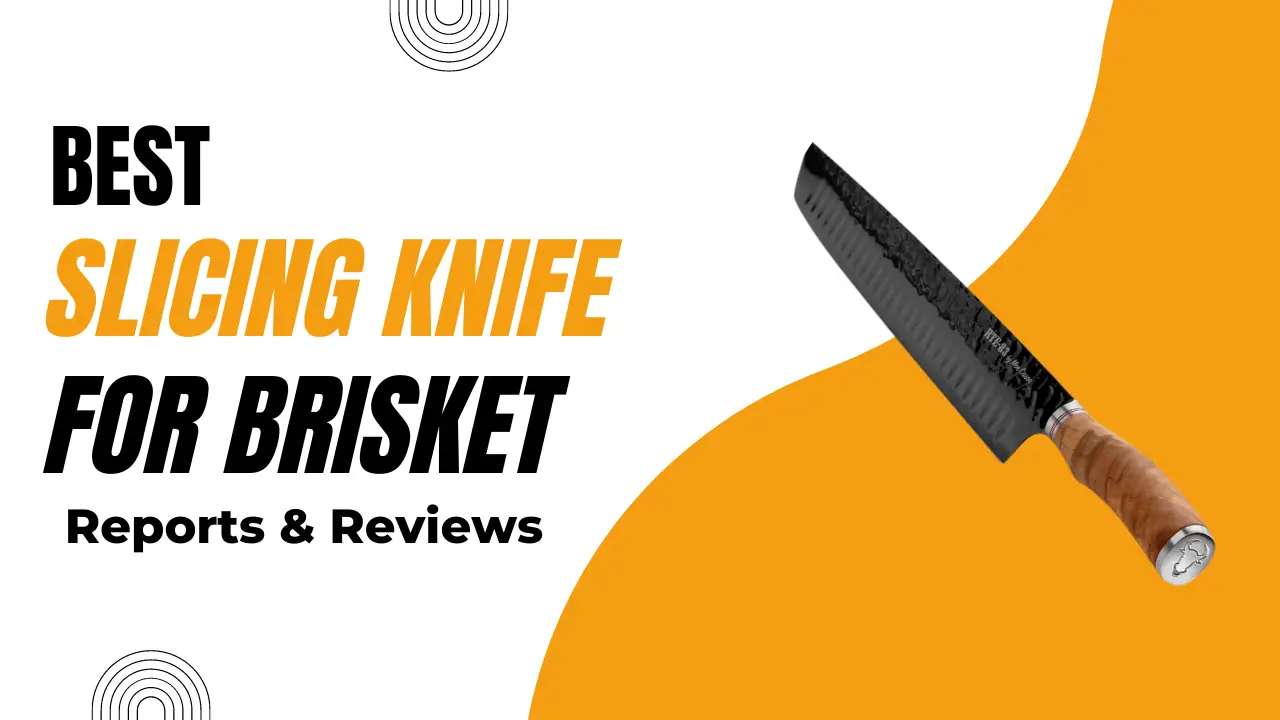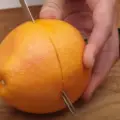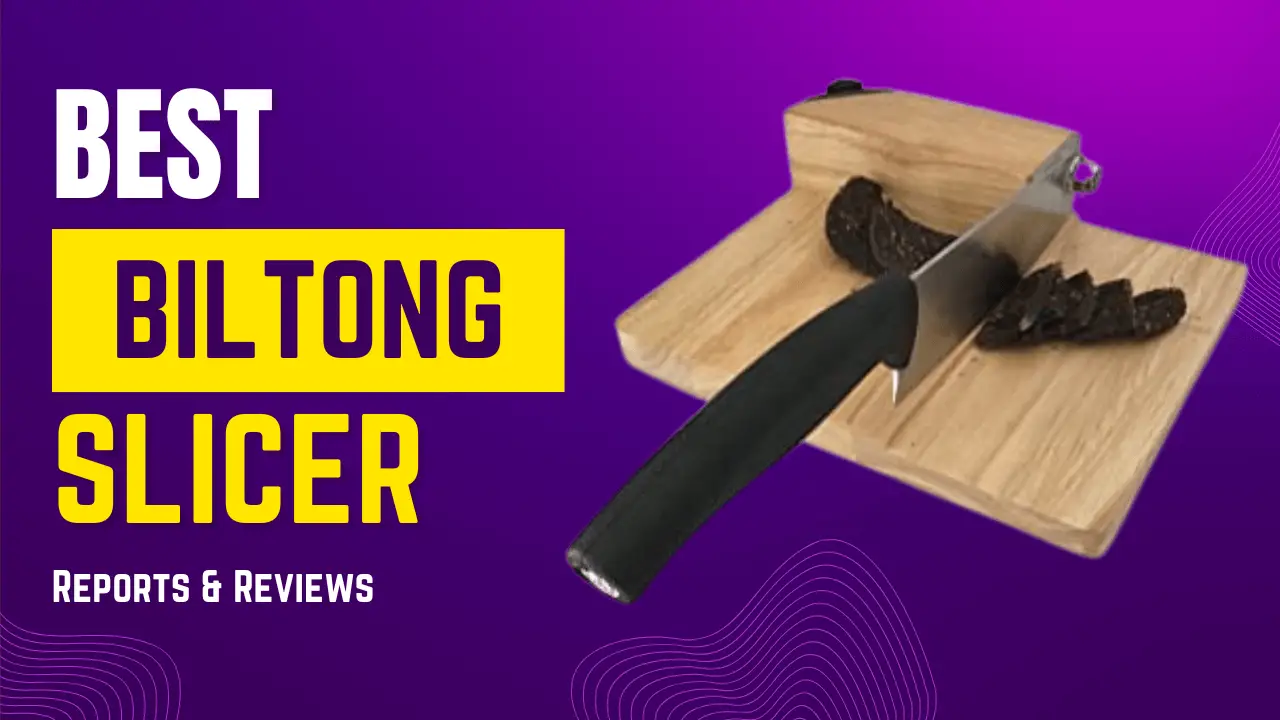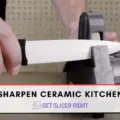Knife maintenance is an important aspect of culinary work, and sharpening your knife is a critical part of that process. A dull knife is ineffective and dangerous, requiring more cut force and can easily slip. A belt sharpener is one tool that can help you maintain a sharp edge on your knife. A belt sharpener, which uses flexible abrasive belts, can sharpen a variety of knife types and can restore the cutting edge of a severely dulled knife efficiently.
How To Sharpen A Knife Using A Belt Sharpener?[/su_heading]
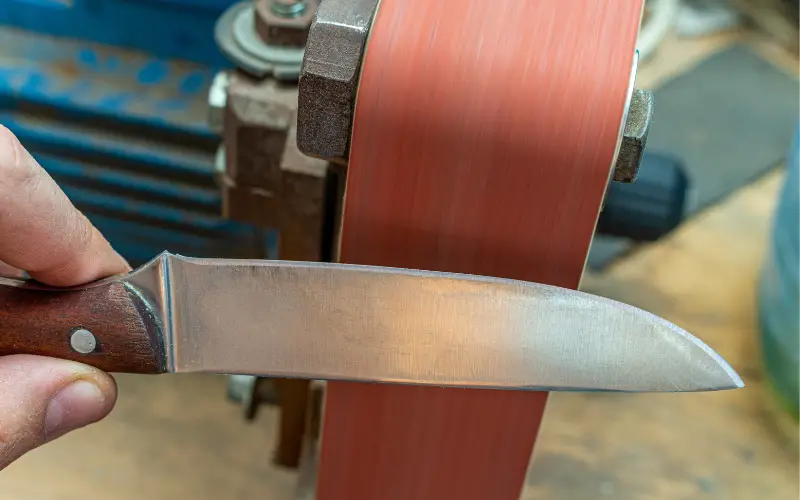
Sharpening a knife using a belt sharpener can be very effective. Here’s a basic guide on how you can do this:
Step 1: Safety First: Ensure you work in a well-lit, safe environment. Wear cut-resistant gloves for protection. Keep a first aid kit nearby, just in case of accidents.
Step 2: Inspect Your Knife: Inspect your knife for any major nicks or damage before sharpening. Depending on the extent of the damage, you might need to grind the edge before you can sharpen it.
Step 3: Setup Your Belt Sharpener: Follow your belt sharpener’s user manual instructions to set it up correctly. This may include attaching the correct grit belt for the task. Typically, you start with a coarser grit belt if your knife is dull or has nicks and damage. The same grit depends on your knife’s condition, but generally, 220 grit is a good starting point. For regular sharpening or honing of an already reasonably sharp knife, a finer grit (like 1000 or higher) may be used.
Step 4: Sharpening the Knife: Turn on the belt sharpener and hold the knife by the handle. Place the blade against the belt at the appropriate angle (typically around 15-20 degrees for most kitchen knives, but refer to your knife manufacturer’s instructions). Start at the base of the blade (nearest the handle) and slowly draw the blade across the belt, moving towards the tip of the knife. Ensure the entire length of the blade comes into contact with the belt. Apply moderate pressure – you don’t need to press hard, ensure consistent contact.
Step 5: Sharpen Both Sides: Repeat this process on the other side of the knife. Try maintaining the same number of strokes on each side to ensure an evenly sharpened blade.
Step 6: Refining the Edge: You’ll want to refine the edge once the blade has been sharpened with the coarse belt. Replace the coarse belt with a finer grit belt (say, 1000 or higher) and repeat the process. This will smooth out any roughness left by the coarser belt and polish the edge, making it sharper and smoother cut.
Step 7: Testing and Honing: Test the sharpness of your knife by cutting a piece of paper. If it cuts cleanly, your knife is sharp. If not, you might need to repeat the process or adjust the sharpening angle.
Step 8: Clean the Knife: After sharpening, clean the knife thoroughly to remove any metal filings.
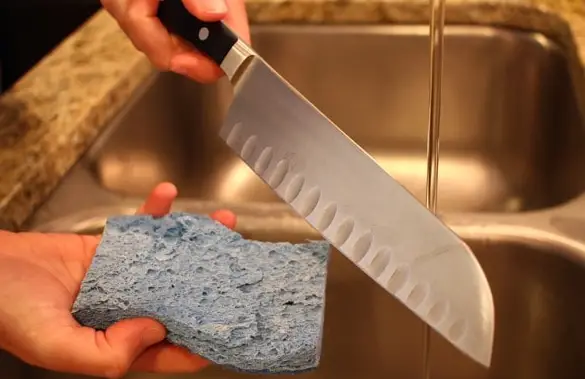
Remember, different knives may require different sharpening techniques or angles. Always follow the knife manufacturer’s instructions and use the belt sharpener’s user manual as your primary guide.
What Are The Uses Of A Belt Sharpener?[/su_heading]
- Knife Sharpening: Knife sharpening is the most common use of a belt sharpener. It can handle various knives, from the kitchen to hunting knives, and effectively restore their sharp edges.
- Tool Sharpening: Belt sharpeners are not limited to knives. They can also sharpen tools like chisels, axes, and plane blades.
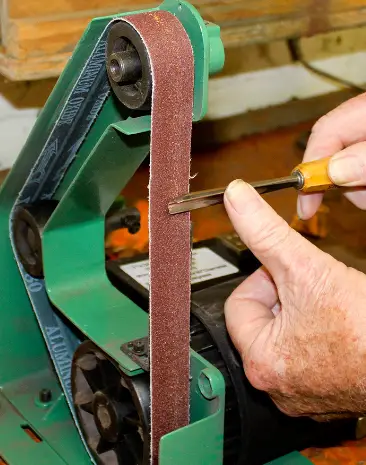
Tool Sharpening with A Belt Sharpener - Material Shaping and Smoothing: Beyond just sharpening, belt sharpeners can shape and smooth various materials, such as wood and metal, making them a valuable tool in many workshops.
- Deburring: A belt sharpener can remove the burrs (small pieces of material left after cutting or grinding) from the edges of metal parts or tools.
- Polishing: With the appropriate belt type, a belt sharpener can also polish different materials, providing a clean, finished appearance.
With its wide range of applications, a belt sharpener is a versatile tool useful in both professional and home environments.
FAQs
What grit belt should I use for knife sharpening?
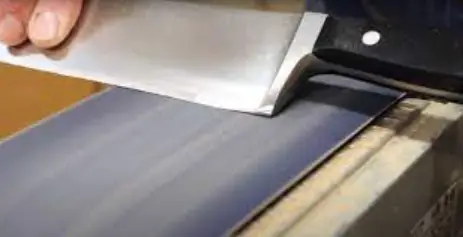
It depends on your knife’s condition. Rougher grits (120-200) are ideal for very dull knives, while finer grits (400-1000) are suitable for refining the edge.
How do I know if my knife is sharp enough?
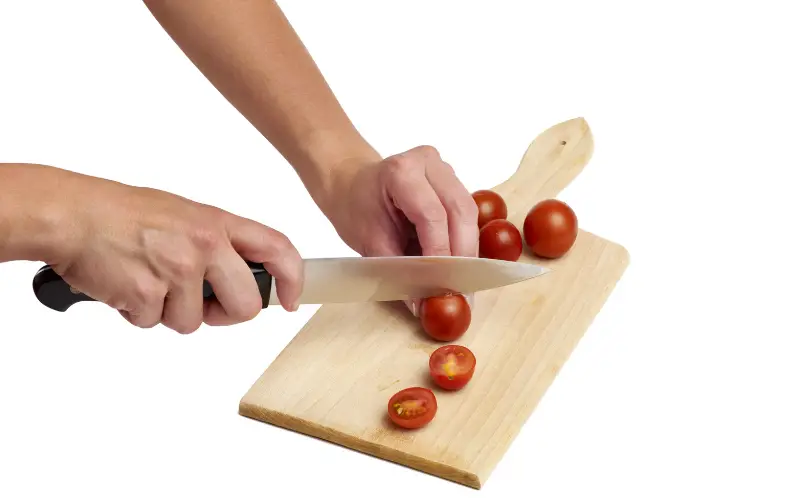
There are various methods, from the paper test to the tomato test. A sharp knife should cut through things smoothly without much resistance.
Can I damage my knife with a belt sharpener?
Improper use can damage your knife, like using the wrong grit or sharpening at the wrong angle. But with proper technique, a belt sharpener is safe and effective.
Is there a difference between sharpening and honing a knife?
Yes, Sharpening involves removing metal from the blade to create a new edge while honing aligns the existing edge without removing material.
Can all types of knives be sharpened using a belt sharpener?
Most kitchen and outdoor knives can be sharpened with a belt sharpener. However, delicate or specialized knives may require a different method.
Conclusion
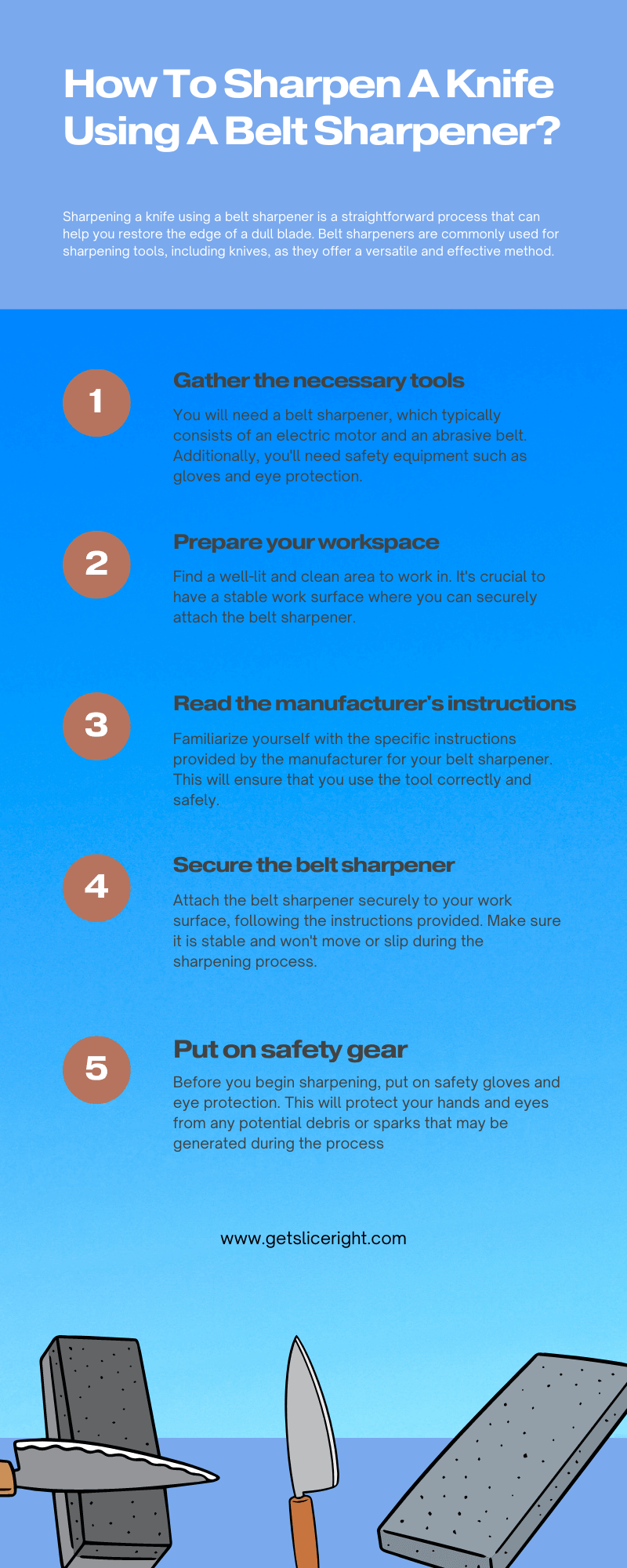
A belt sharpener is an efficient and versatile tool for maintaining the sharpness of your knives. With proper usage and safety precautions, it can restore and maintain the cutting edge of a wide variety of knives. However, remember that the sharpening process involves removing some material from your knife. So, while regular maintenance of your knife’s edge is essential, it’s also important to use the belt sharpener judiciously to extend the life of your knife. Regular practice and care will help you achieve the best results and ensure your knives are always ready for the task at hand.

John Hebdon is a food enthusiast, passionate chef, and author of various articles and blog posts related to food and cooking. With a deep love for all things culinary, John’s blog serves as a platform to share his extensive kitchen experiences with a broader audience.
In addition to his culinary expertise, John has a flair for writing and a natural ability to share his passion for food with others. His articles and blog posts are informative, engaging, and packed with practical tips for readers of all skill levels.
As a food enthusiast and writer, John is always on the lookout for new and exciting culinary experiences. Whether it’s trying out a new restaurant, experimenting with a new recipe, or simply sharing a favorite dish with friends and family, John is always eager to explore and share the world of food with others.

